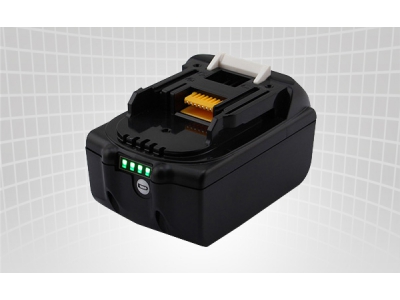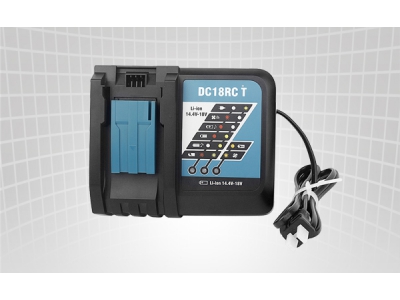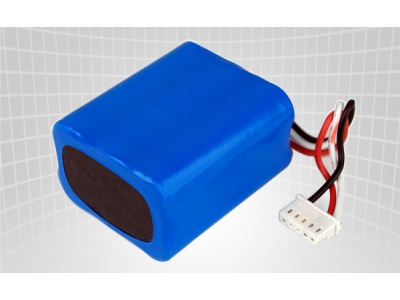Top 10 lithium-ion battery technology breakthroughs in 2016
The role of lithium batteries in our lives will be increasingly important. Lithium-ion batteries can be found everywhere from smartphones to electric cars to storage. However, as these industries have developed, more demand has been made for these products and more stringent requirements for lithium. Battery technology, therefore, is particularly important. At present, lithium ion battery energy density and safety to be promoted, lithium sulfur batteries, lithium air batteries and solid-state batteries have hope to replace the lithium ion battery, the three kinds of battery technology, is the hot areas of industry research. In 2016, we will be at the end of the year, and in this year‘s review, OFweek lithium electric power grid has carefully taken up the top 10 scientific research achievements of the battery, for your reference!
Breakthrough one: South Korea introduces a new type of fire-proof explosion proof solid-state lithium battery
Ulsan university of science and technology (UNIST, energy and chemical engineering institute) Yoon Seok Jun and Seoul national university professor. Seng m. Oh professor led research and development team has developed a solid-state lithium battery. The way to develop the battery is to melt the solid electrolyte first, then apply the melted electrolyte to the electrode. In order to solve the inactivity between the powder‘s solid electrolyte and electrode active materials, the lithium ion is more difficult to move to the electrode. The team has also developed a material that can enhance the conductivity of solid electrolytes, with the addition of lithium iodide (LiI) in methanol.
According to the team‘s professor Jung, the newly developed solid electrolytes are highly ionized and non-toxic. And the batteries and solvents (methanol) are cheaper.
Compared to the liquid lithium ion, solid-state lithium battery in circulating sex, security, power attenuation, life and has obvious advantages, on energy density and voltage is higher, the battery module and system design more simple.
There are two main problems with the industrialization of all solid-state batteries, which are not high at room temperature. Two, the interface between solid electrolyte and positive negative electrode is larger.
South Korea‘s launch of the new battery, in a breakthrough on the conductivity of the solid electrolyte ions, and the material is cheaper, if the technology is mature, will accelerate the process of solid state lithium batteries into commercial applications.
Breakthrough 2: new dual-ion battery technology costs lower energy density and higher energy density
Tang yongbing, a researcher at the institute of advanced technology in shenzhen, the Chinese academy of sciences, and his team developed a new type of high-storage and low-volume battery technology.
According to the introduction, the aluminum and graphite diion battery invented by tang yongbing is a new, efficient and low-cost storage battery. The new battery, which USES graphite instead of lithium in lithium batteries, is a positive electrode, using aluminum foil as a negative electrode and a negative terminal fluid. The electrolyte is composed of regular lithium and carbonate organic solvents.
The new battery in the process of charging, the anode graphite anion intercalated reaction, and aluminum anode aluminum - lithium alloying reaction, discharge process, on the other hand. This new type of reaction mechanism, not only can improve the working voltage of the battery (3.8-4.6 V), greatly reduced the quality of the battery at the same time, volume, and the manufacturing cost, so as to improve the energy density of battery (~ 220 Wh/kg).
The team members said, 500 kg of aluminum - graphite the range of the battery can reach about 550 kilometers, and the same weight of ordinary electric vehicle batteries, range only up to more than 400 kilometers. The new type of battery can reduce the cost of production by about 40% to 50% compared with conventional lithium, and the energy density is at least 1.3 to 2.0 times higher.
In edit view, Tang Yongbing tang researcher and his team developed the aluminum - graphite double ion battery, from at present has very high application value. Affected by "the expenses incident", the state financial subsidies to the new energy vehicles, starting next year will be fully TuiPo, aluminum - graphite battery production cost can be reduced about 40% - 40%, subsidies can be TuiPo negative effects on the new energy vehicles completely eliminate, even also can make the new energy automobile prices down further. The range of improvements could ease the "battery life" of new energy vehicles. If the battery technology can mature early, it could have a powerful impact on the existing dynamic battery.
Breakthrough 3: micro macro does not burn battery technology or solve electric car fire problem
On March 19, 2016, micromacro held the "More Than Safe | micromacro non-burning battery technology" event at water cube in Beijing. The non-burning battery technology was the result of eight years of non-burning battery technology. Mainly from the high temperature resistant, diaphragm electrolyte not burning active defense, and STL intelligent passive defense of two aspects of thermal control fluid technology to solve the safety of the lithium ion battery.
Study shows that the lithium ion battery in the case of thermal runaway, heat quantity is the most liquid electrolyte, so there is no combustion of electrolyte is to ensure that the battery is not one of the most important problem to be solved. At the scene, micromacro shows that the electrolyte does not burn. After the electrolyte is not burned, the high performance diaphragm is also an important guarantee for the safety of lithium-ion batteries. The normal lithium ion battery diaphragm usually has a low melting point, which shrinks at around 130 degrees centigrade, causing a short-circuit of the battery and the heat out of the battery. Micromacros proposed the idea of a heat-resistant diaphragm. Compared with ordinary PE membrane, high temperature resistant diaphragm higher melting point, can ensure the battery even under the high temperature of 300 degrees Celsius will not shrink, inside the battery to prevent short circuit, so as to avoid thermal runaway. The problem of electrolyte and diaphragm in the lithium ion battery is the equivalent of setting up defensive measures for non-burning batteries. Micromacros have also established passive defense measures using STL smart thermo-controlled fluid technology, which is immersed in the system.
STL intelligent thermal control fluid technology refers to the battery pack is submerged in liquid, the use of insulating thermal conductive liquid as the thermal conductivity are good materials, insulation, flame retardant, can in the case of internal short circuit inside the battery pack on a microscopic level, rapid heat isolation is out of control points, using liquid to reduce thermal runaway point at the same time, the temperature of maximum drop below the battery safety risk. STL besides safety, also can balance battery internal temperature differences, and use the external circulation to achieve better temperature control, even if the battery discharge at the same time, can also be found in a timely manner through the liquid detection, security more secure.
Don‘t burn the electrolyte and resistance to high temperature diaphragm two active defensive measures, cooperate with STL intelligent thermal control fluid is a passive defensive measures, finally achieved the battery system level not combustion, high safety and high performance.
Lithium battery can easily catch on fire, because of its thermal stability is poorer, at about 200 ℃ temperature of the outside world, will decompose and release oxygen, and the combustible electrolyte in the battery, carbon materials, together with. Once the lithium battery is on fire, the resulting heat will further exacerbate the positive dissociation, which will ignite in a very short period of time.
Battery will not achieve in the process of normal use combustion conditions, when the happening of the lithium ion battery internal short circuit, makes the lithium battery thermal runaway, resulting in lithium battery spontaneous combustion. Unstable design, environmental damage and mechanical damage can be avoided through electronic devices and mechanical design. However, it is difficult to control the internal short-circuit caused by the lithium battery material system and the process of making process.
Micro macro not burning from the electrolyte, lithium ion battery diaphragm and thermal control fluid technology in three aspects, to block combustion source directly, maximize avoid burning of lithium ion batteries.
Breakthrough 4: no cobalt high voltage battery material can reduce battery cost
The Nano one company has announced that it has successfully developed a cathode material for the cobalt high voltage lithium battery, high voltage spinel. The material only lithium, manganese, nickel and not containing cobalt element, and has been compared to commercial cobaltiferous battery materials, with high output voltage, long life, high safety, battery capacity and discharge characteristics of power, and reduce the cost, environmental protection and supply chain risk pressure. The advantages of high voltage, low volume and low cost will play a major role in electric cars and digital products in the future.
The three main battery materials on the market are lithium titanate, which is expensive and has low energy density. Iron phosphate, low energy density, high cost, low output voltage; Three yuan is not safe enough. By contrast, the value of this new battery material is, arguably, the perfect solution to the big bottlenecks facing lithium batteries today.
Breakthrough 5: the new composite metal lithium electrode material breakthrough commercial bottleneck
Famous American Stanford university materials scientist yi cui and former us secretary of energy, the Nobel Prize for physics laureate Steven chu team behind the study, in the practical application of metallic lithium electrode recently made breakthrough development.
Metallic lithium has extremely high theoretical capacity and ideal negative potential. With metallic lithium secondary battery cathode, high working voltage, high energy density and other advantages, make metallic lithium become the first choice in the field of energy storage materials today. However, the secondary reaction of lithium and electrolyte, the change of electrode size in circulation, and the formation of lithium dendrite. The former greatly reduces the coulomb efficiency of the battery, affecting its electrochemical properties. The latter would pose a serious safety hazard to a metal lithium-ion battery.
After several attempts, the team turned their attention to nanotechnology. Research team to conduct the thorough research to the material surface special invasive, first proposed the "lithium sex" this concept, and by using lithium "kiss" surface treatment of carbon body material, through the establishment of lithium "kiss" interface material system, melts the metal lithium pioneering, after using the capillary effect of inhalation carbon fiber network space, the successful preparation of the composite metal lithium electrode containing supporting frames. New study of compound lithium metal electrode in the process of carbonate electrolytic liquid is the cycle of changes of its small size, high specific capacity and good cycle and the ratio of performance and the voltage curve is relatively smooth, break through the current commercial main problems of metallic lithium battery.
The composite metal lithium electrode consists of a 10% volume ratio of carbon fiber and lithium. The carbon fiber network has good conductivity, high mechanical strength and electrochemical stability, so as the main frame material of metallic lithium is excellent choice. Compared with the previous related research, Yang and others will be lithium metal melt, and according to different materials of invasive lithium "kiss" proposed "thin lithium" concept, for lithium metal electrode research provides a new way of thinking, and used for reference by other areas of study has a very high.
In this research, the editor believes that compared with synthetic new composite metal lithium electrode materials of this achievement, the lithium "kiss", they proposed the concept of "thin lithium" achievement is bigger, because the concept of metallic lithium electrode research provides a new way of thinking, may be in the future research to develop more excellent material, more scientific research achievements.
Breakthrough 6: MIT‘s new lithium oxygen battery, or "anxiety" to solve electric car battery life
By the institute of nuclear science and engineering at the Massachusetts institute of technology, led by professor li kui-wai, and MIT, argonne national laboratory, Beijing university and several other members of the team announced the new development of lithium battery oxygen.
According to professor li kui-wai, "traditional lithium air batteries work principle is this: in the process of discharge, lithium air batteries to absorb oxygen from the outside world, and with the lithium battery produces chemical reaction. In the process of charging, produces instead of chemical reaction, oxygen is released back into the air. And the new oxygen lithium battery, charging and discharging process, to make the same electrochemical lithium and oxygen reaction, but the whole process doesn‘t need oxygen gas change. Oxygen has been exist in solid state situation, and can switch directly in the three kinds of REDOX state, oxidation of the three different kinds of solid compounds - lithium Li2O lithium, lithium Li2O2 and peroxide oxidation LiO2".
The mystery of the new type of battery is to create a tiny particles, about at the nanometer level, into the glassy particles can contain lithium and oxygen at the same time, and tightly surrounded in cobalt oxide, cobalt oxide) matrix. Because nano-lithium oxygen is usually very unstable, the researchers put them in the cobalt oxide matrix. The cobalt oxide matrix is actually a sponge-like substance that has a stomata every few nanometers. The cobalt oxide matrix can stabilize nano-lithium oxygen, and can act as a catalyst for chemical reactions.
Prof li compared the lithium air battery to the new lithium-oxygen battery, a major drawback of the lithium-ion battery, which is the mismatch between charging and discharging. Battery output voltage is lower than the charging voltage of 1.2 v, this means that in the process of every full charge, will produce a great energy loss, when charging, about 30% of the energy in the form of heat loss, if you charge too fast, it can be spontaneous combustion. The voltage loss of the lithium-ion battery can be improved by more than five times, from 1.2 to 0.24 volts, so only 8% of the electricity is converted to heat. This means the car can fast charge, so the battery will solve the condition of burning, no longer constitute a safety hazard, and to guarantee the energy efficiency of the battery.
The lithium air battery is actually a lithium dry oxygen battery, because it can‘t handle moisture and carbon dioxide at all. So the type of air that the lithium air battery USES must be dealt with carefully. The new battery doesn‘t need to be inhaled or removed, and the problem of the lithium-air battery is solved.
In addition, the new battery itself has a protective mechanism for over-charging, which can be self-imposed in the case of overcharging. Once the overcharging occurs, the chemical turns into a different form and the chemical reaction breaks down. In cyclic loading test, battery lab version completed 120 times charging - discharging cycle test, the whole process, only 2% of the energy loss, which means that the battery or will have a long life.
The research team said the new battery used as a liquid electrolyte was the cheapest one. In addition, cobalt oxide is less than half the weight of the nanoscale. Overall, the new batteries are more widely available, cheaper and safer than lithium-ion ones.
The editor believes this is a major breakthrough that could lead to a major development of oxygen-cell technology. Lithium air batteries, is regarded as the ultimate form of li-ion battery, oxygen and this new type of lithium battery, the upgrade of lithium air batteries more powerful, more convenient and more secure. I hope this technology will mature quickly and come to market!
Breakthrough 7: the Chinese academy of sciences has developed high-performance graphene lithium battery materials
Hefei institute of material science, Chinese academy of sciences, institute of intelligent mechanical jin-huai liu and Huang Hang nine research associate professor Liu Jinyun in developing high-performance graphene lithium ion battery has made new achievements.
Liu Jinyun etc. Through the university of Illinois at urbana-champaign with hefei institute of Chinese academy of sciences, developed a 3 d graphene based composite battery materials, active material with high load, short ion electronic transmission path, and assemble the battery electrode material don‘t need to use any adhesive and conductive additives, such as battery with high capacity and good cycle stability.








